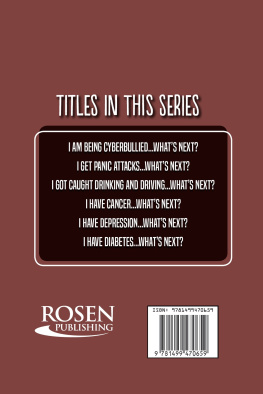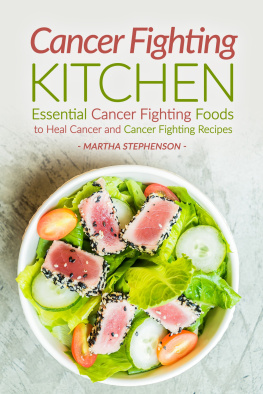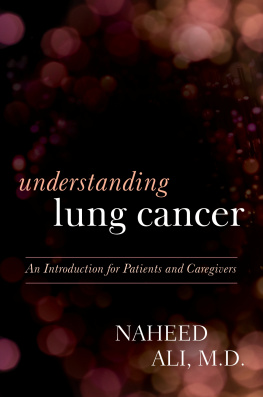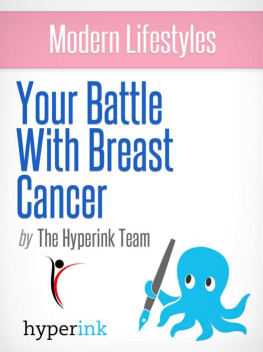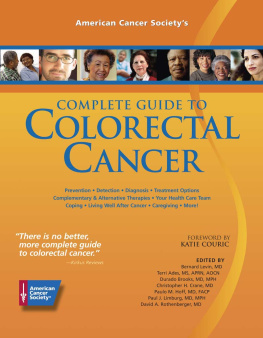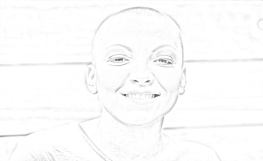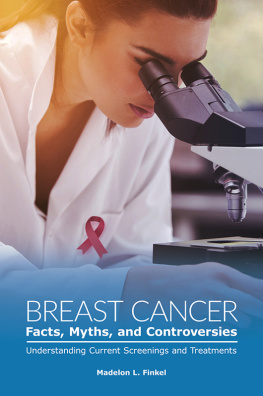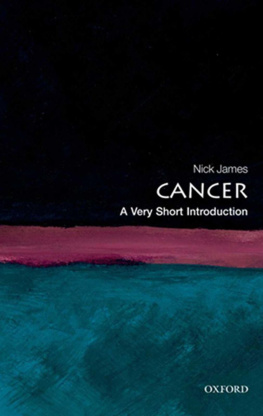
Published in 2022 by The Rosen Publishing Group, Inc.
29 East 21st Street, New York, NY 10010
Copyright 2022 by The Rosen Publishing Group, Inc.
First Edition
Designer: Rachel Rising
Editor: Greg Roza
Portions of this work were originally authored by Luke Graham and Henrietta
M. Lily and published as Its Cancer. Now What? All new material this edition
authored by Elissa Bongiorno.
All rights reserved. No part of this book may be reproduced in any form
without permission in writing from the publisher, except by a reviewer.
Library of Congress Cataloging-in-Publication Data
Names: Bongiorno, Elissa, author.
Title: I have cancer whats next? / Elissa Bongiorno.
Description: New York: Rosen Publishing, [2022] | Series: Getting real:
strategies for teens in need | Includes index.
Identifiers: LCCN 2021009418 | ISBN 9781499470666 (library binding) | ISBN
9781499470659 (paperback) | ISBN 9781499470673 (ebook)
Subjects: LCSH: Cancer in adolescence. | Tumors in adolescence.
Classification: LCC RA645.C3 B66 2021 | DDC 616.99/400835--dc23
LC record available at https://lccn.loc.gov/2021009418
Some of the images in this book illustrate individuals who are
models. The depictions do not imply actual situations or events.
Manufactured in the United States of America
CPSIA Compliance Information: Batch #CSRYA22. For further information contact Rosen Publishing, New York, New York at 1-800-237-9932.
Find us on 
CONTENTS
INTRODUCTION
Being a teen can be a tumultuous experience. Changing bodies and surging hormones can make everything feel seriously out of control. And thats before considering school, friends, and romantic relationship pressure. But sometimes, a much more serious problem can arise. Sometimes, teens can become seriously ill. They can be diagnosed with cancer.
In 2020, about 89,000 young people were diagnosed with cancer, and 9,270 of those patients died, according to the American Cancer Society. Researchers consider young people to be ages 15 to 39 years old. Of those young people diagnosed with cancer, 5,800 were teens, ages 15 to 19 years old. In fact, cancer was the leading cause of disease-related deaths for teens ages 15 to 19 with a total of 540.
Statistics like these may be hard to digest. They dont seem real. So, consider the true-life story of Lauren Telesz. When she was 15, Lauren was diagnosed with Hodgkins lymphoma, a type of cancer that affects the bodys lymph nodes. Lymph nodes are glands that help filter out harmful substances. When Lauren was in a childrens hospital getting treatment for her disease, there was a playroom for kids younger than her. She didnt feel like she belonged there. A clown visited, but she felt too old for those activities. So she scrolled on her phone and watched her friends getting ready for homecoming on social media. Lauren felt very alone.
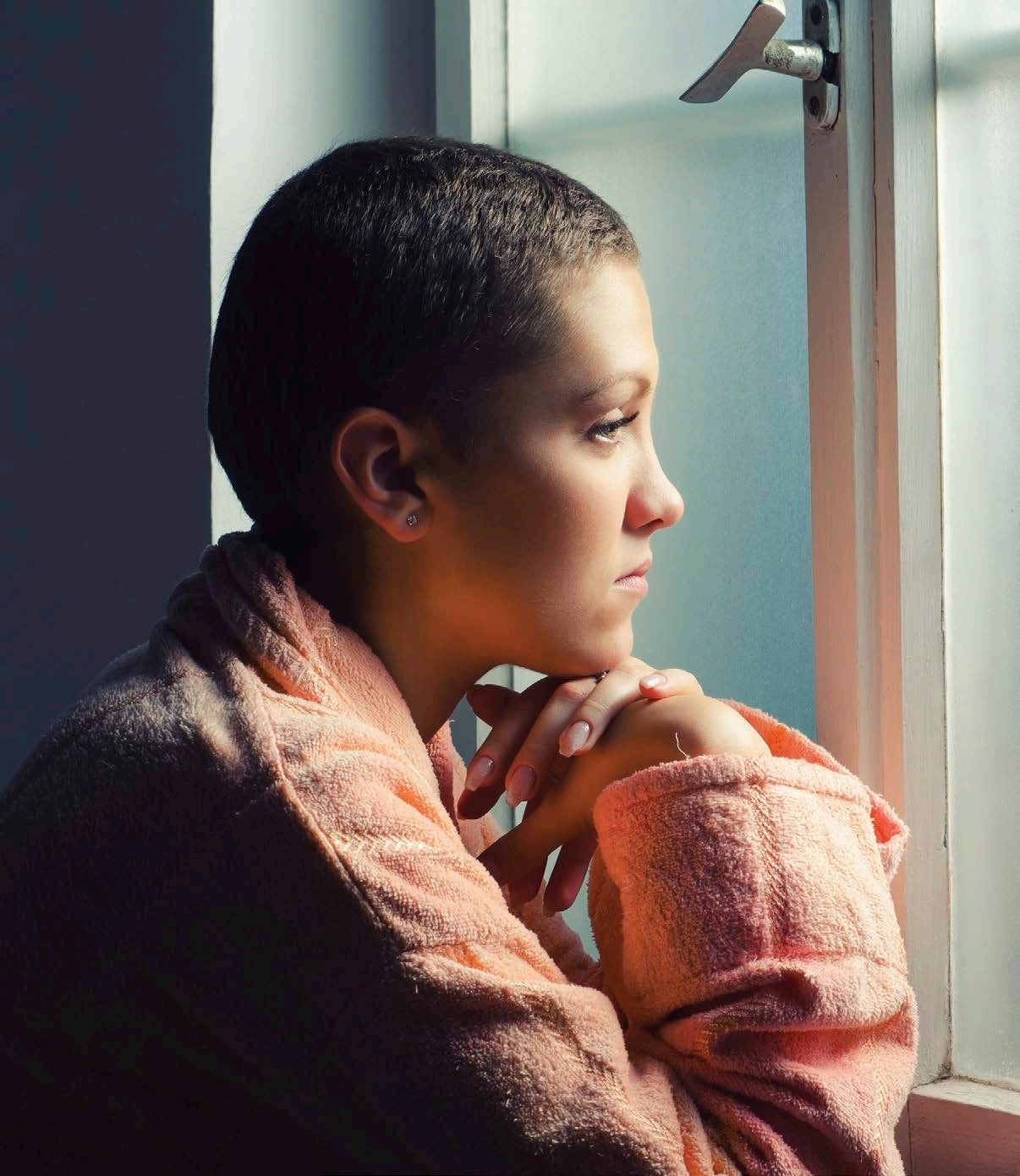
Being sick as a teen can be a lonely experience. While friends are out having fun, you might be stuck inside a hospital trying to get well.
But Lauren got better. The five-year survival rate for Hodgkins lymphoma is very high97 percent! Once she was healed, Lauren didnt forget that feeling of loneliness. She decided to make a difference. She worked to create a teen center at a hospital in Connecticut for adolescents receiving treatment for cancer. The center has video games, a virtual reality headset, and other activities for teens.

A cancer diagnosis can be a scary thing. But you can work to fight the disease with the help of doctors, family, and friends.
Laurens story can provide hope to anyone diagnosed with cancer. She recovered from her illness and was even able to make a difference in other peoples lives. It can be very scary to hear that you or someone you love has such a serious disease. However, there are many treatments available for those suffering from cancer. According to the American Cancer Society, five years after being diagnosed, about 83 percent of boys who had cancer and 90 percent of girls are still alive.
A cancer diagnosis can change your life, but it doesnt have to end it. There are many ways to survive and thrive while ill, and after. When facing something scary, it helps to learn more about it. Information is power. This book will help you understand what cancer is, how to prevent it, and what happens after a diagnosis. By learning about cancer, you can be better prepared to help yourself, or anyone else in your life who might become ill.
CHAPTER 1
SO, WHAT IS CANCER, ANYWAY?
There are many different types of cancer. Thats what can make cancer so difficult to treat and combat. Some types of cancer can be very deadly. Others have a much higher survival rate. But all types of cancer have some things in common.

Cancer starts to grow when one cell begins replicating, or reproducing themselves, when not necessary. These abnormal cells grow faster than normal cells.
HOW CANCER WORKS
Cancer begins at the cellular level. That means it starts to develop in the bodys cells. Trillions of cells make up the human body. Cells of all different types have different and special jobs to perform.
Every day, the human body experiences wear and tear that damages its cells. New cells are needed to replace old, damaged cells. In order to make new cells, each cell divides in two. Ordinarily, cells divide and produce more cells only when the body needs them. Cells get their directions to divide from genes. Genes control several different functions of the cells. This process of new cell creation and the replacement of old cells is how the human body stays healthy and strong.
Cancer starts when a few cells in the body start dividing out of control. A cancer cell divides even when new cells arent needed. A cell that goes crazy replicating unnecessarily is called an abnormal cell. Abnormal cells grow more quickly than normal cells. When the abnormal cells keep dividing, a mass of tissue forms. Tissue is a collection of cells that perform a specific function. But the tissue thats formed from abnormal cells doesnt have a function. The tissue made by abnormal, cancerous cells is abnormal too.
The tissue thats formed from abnormal cells is called a tumor. It can grow in any part of the body. Other names for a tumor are growth, lump, or neoplasm. The good news is that not all tumors are cancerous. If you find a lump, talk to a parent and doctor about it, but also know that most lumps arent cancerous. A noncancerous lump is called benign. So, try not to worry too much and just get it checked out.
ITS BENIGN!
Benign literally means to be of a gentle nature, or to be harmless. Benign tumors grow slowly and stay in one place. The cells of this kind of tumor dont invade nearby tissues or organs. They keep dividing and making abnormal tissue, but they dont spread. They keep to themselves. Many of us live with benign tumors or growths without even knowing it. A mole or a wart on your skin is an example of a common benign tumor.
Even though benign tumors arent cancerous, they can interfere with the normal functioning of the body. Benign tumors may grow large enough to crowd other cells and tissues. If they grow too large, they can be removed, usually via surgery. After removal, benign tumors rarely grow back. Some are completely harmless and thus need no treatment at all. Here are some other types of benign tumors:
Next page
